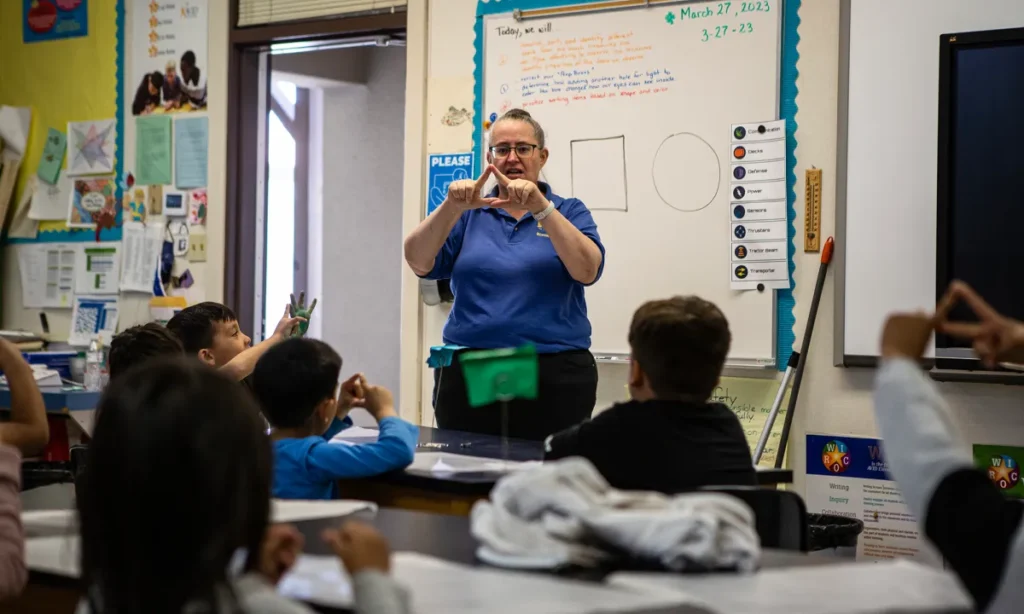Share
By Dale Kalser, Manuela Tobias, and Tony Bizjak
She was afraid of catching the coronavirus – so fearful, in fact, that she switched jobs to pack tomatoes for an employer who seemed to be taking the right precautions.
But Maria Claudia Garcia got sick anyway.
A farmworker from Venezuela living in the San Joaquin Valley town of Mendota, she came down with a harsh case of COVID-19. She experienced intense fevers and headaches. She lost her sense of smell and taste. Her husband, also a farmworker, got sick as well.
Speaking in Spanish, she summed up the ravages of the coronavirus this way: “It’s like your body isn’t yours anymore.”
21,000 Coronavirus Cases and Counting
Garcia is one of more than 21,000 residents who’ve been sickened in Fresno County through Aug. 18. She took ill in mid-July — about the time when the pandemic began seriously hammering the Valley. Within weeks of Garcia being stricken, the Trump administration’s coronavirus task force coordinator, Dr. Deborah Birx, called the Valley one of the worst hot spots in America for COVID-19.
Long overlooked, often derided as “the other California,” the Valley is finally in the spotlight – for all the wrong reasons. Gov. Gavin Newsom described the Valley as his “biggest area of concern” recently and dispatched three of his coronavirus “strike teams” to the region to help local officials halt the spread.
Yet some believe the region could use the surge in coronavirus infections to its advantage, leveraging the attention and resources to not only beat the pandemic but bring about meaningful improvements in a region plagued for decades by low wages, substandard housing, spotty access to health care and rampant environmental problems.
“We have national attention, and we seem to have the beginnings of political will for actual structural changes to support the people who feed us,” said Ildi Carlisle-Cummins, head of the California Institute for Rural Studies, a research and advocacy group based in Davis.
“I’m hopeful. Even if you don’t care about human dignity, we all should realize the foundation of our food system is at critical risk,” Cummins said.
Legislation Calls for Better Farmworker Housing
Already legislation has been introduced to enhance tax credits designed to spur the development of better housing for farmworkers. Its sponsors say overcrowded dwellings are breeding grounds for the virus.
Yet it remains to be seen how the pandemic will change the Valley’s complexion. COVID-19 is putting considerable pressure on agriculture in ways that could hurt farmworkers eventually. For instance, it might speed up the mechanization of Valley farming as growers try to reduce their dependence on field labor.
“There’s a huge new interest in mechanization,” said Phil Martin, a farm-labor economist at UC Davis.
The Valley offers a litany of areas that need change. Burdened by low wages that are common in agriculture, its unemployment and poverty rates are considerably higher than the rest of the state. Compared with other Californians, its students struggle to finish high school and get through college.
“What we are seeing is that the pandemic has pointed out the pervasive social and structural inequities that are disproportionately hurting racial and ethnic groups.”
The Valley has its own page on the U.S. Environmental Protection Agency’s website, a sad testament to a region where drinking water is often tainted by nitrates and arsenic and the smoggy air has created clusters of asthma and other respiratory ailments.
And now it’s being haunted by the worst public health crisis in a century, a disease that has laid bare the vast inequities that long pre-date the pandemic.

COVID-19 Widens the Inequality Gap
In a region where low-income, vulnerable Latinos often live in cramped quarters, ride to work in crowded vehicles, don’t speak English, and are undocumented, the coronavirus is widening the gulf between rich and poor.
One small example: Barely half of California’s farmworkers say their employers provide them with face coverings, according to a recent survey by the Institute for Rural Studies.
“This is a big moment,” said Dr. Sergio Aguilar-Gaxiola, head of the UC Davis Center for Reducing Health Disparities. “What we are seeing is that the pandemic has pointed out the pervasive social and structural inequities that are disproportionately hurting racial and ethnic groups.”
In the Valley, however, change often comes slowly, and there’s considerable skepticism that a mere pandemic can lead to fundamental changes in the social, political, and economic dynamics that have plagued the region’s agricultural underclass for decades.
“Unfortunately, I think that’s just wishful thinking,” said Armando Elenes, secretary-treasurer of the United Farm Workers.
The UFW has stepped into a fight at a Kern County pistachio plant where dozens of workers have become infected, two have died, and several workers have been fired or demoted for speaking out.
“A lot of them are totally afraid of losing their job, so they don’t want to say anything,” Elenes said.
How the Valley Depends on Agriculture
Agriculture is the bedrock of the Valley’s economy and the pride of its people. Valley growers make up the heart of the state’s $50 billion-a-year agricultural industry and are among the leaders nationwide in the production of almonds, grapes, dairy products, and more.
But the Valley’s agriculture industry seems to have been caught flat-footed by the pandemic just as much as the rest of the country.
In May the virus infected 174 employees of two Ruiz Foods frozen-food plants in Tulare County, forcing a temporary reduction in production capacity. That same month, nearly 200 employees of the Central Valley Meat Co. in Hanford tested positive. Before long the virus struck dozens of workers at the Primex Foods pistachio processing plant in Wasco, Kern County.
The state’s 1,200 or so dairy farmers went through gyrations of a different sort. The closure of schools and restaurants dried up much of their demand, prompting them to scale back production and in some cases cull their herds. California’s farmers even dumped about 1 percent of their supplies.
When restaurants started reopening, demand shot back up, and the farmers weren’t in a position to serve everyone. Prices spiked and spot shortages of some dairy products occurred.
“The cows are not like a faucet; you can’t just turn them back on,” said Annie AcMoody, an economist at Western United Dairies, a trade association in Modesto.
For all that, however, farm production “has been resilient,” said Daniel Sumner, an agricultural economist at UC Davis. “We had very temporary things; when you went shopping in the afternoon, there weren’t any eggs.”
Pandemic Challenges Farmers and Food Processors
But the pandemic continues to pose challenges for Valley farmers and food processors.
Ruiz Foods has instituted “mandatory mask-wearing, strict hygiene,” frequent temperature checks, and other measures since the May outbreak at its two Tulare County plants, said Stephen Coale, a senior vice president, in an emailed statement.
He said the company has experienced “a few reported cases” since May, but all are “traceable to off-duty exposures, such as family get-togethers.”
The situation at Primex has been far more contentious. Workers staged at least one wildcat strike to protest conditions at the Kern County pistachio plant. Elenes, the UFW official, said at one point Primex was charging employees $8 for masks. Employees who’ve been on the front lines of the protests have been demoted or fired, he said.
Although the plant isn’t unionized, the UFW has filed formal complaints with the National Labor Relations Board against Primex.
Company officials didn’t respond to requests for comment. On its website, Primex said it “asked our employees to wear masks in public before it was directed by the State of California” and took other steps, such as instituting an on-site testing program and installing acrylic dividers to separate workers.
How the COVID-19 pandemic impacts farming
At Bowles Farming Co., which grows almonds, tomatoes, watermelons and other crops in the Los Banos area of Merced County, the pandemic began as something of a non-issue.

“We’re an essential industry. We’re being asked by the state to continue performing under these difficult conditions.” — Cannon Michael, CEO of Bowles Farms
“We felt pretty insulated because the number of cases around us was pretty minimal,” said Cannon Michael, CEO of Bowles, one of the most prominent farmers in the Valley.
But before long it was clear that Bowles needed to step up. “A lot of workers commute to work together, a lot of people live in close proximity,” he said.
That’s meant bringing in hand sanitizers and more cleaning supplies. The break room has been shuttered; if workers want to chat, they gather in the machine shop, where they can spread out more easily. Extra care has been taken for the 20 workers and their family members who live in housing on Michael’s farm.
“We’re an essential industry,” Michael said. “We’re being asked by the state to continue performing under these difficult conditions.”
Part of the problem, he said, is that some of his employees are taking the pandemic more seriously than others. Some of them “follow the letter of the law, and we had some who took a more cavalier (attitude),” Michael said. “When they go home, we can’t really police things.”
The pandemic has created other challenges. Some of them seem small but can cost plenty.
Take the collapse of the restaurant and food-service industries, a key market for Michael’s onion crop. Those customers buy onions in bulk, which means large bags. In order to salvage his onion business, he’s now focusing on supplying supermarkets, which insist on smaller, retail-size bags.
Not a big deal? It’s cost him about $300,000 for new bagging machines and other supplies.
Over the long haul, he believes the pandemic is exacerbating the economic pressures facing Valley agriculture. He noted that California’s controversial groundwater-conservation law, known as SGMA, is expected to take a half-million acres of Valley farmland out of production eventually. A good deal of that production could move to Mexico, he said.
In any event, “I think California agriculture will employ fewer people,” Michael said.
Farmworker illnesses: A Familiar Story
Maria Claudia Garcia had been working in Kerman, packing fruit, when she learned that some of her co-workers had contracted COVID-19.
It wasn’t particularly surprising to her. The packinghouse was crowded, especially at lunch, with workers crammed side-by-side at tiny picnic tables.
So she quit, taking a job about a half-hour away in Firebaugh packing tomatoes. Things felt safer, as workers were spaced apart somewhat during lunch breaks and hand sanitizer was widely distributed.
But still, there were risks. Facemasks weren’t distributed regularly. Everyone crammed into the bathrooms during their breaks.
Exactly how she and her husband German got sick remains unclear. All she knows is that both of them have lost four weeks of pay and have to rely on friends for help with rent.
Once she’s clear of COVID-19, Garcia will be free to go back to work. But the woman who normally cares for her 4-year-old has quit out of fear of getting sick. If Garcia can’t find childcare soon, she will have to stay home with the toddler. Half the household income will disappear.
“It will be the same thing over again,” she said.
It’s a story playing out repeatedly across the Valley. Latinos, who make up 39% of California’s population, represent 59% of the coronavirus cases and 47% of the deaths.
In Fresno County, one of the few Valley counties to break down its caseloads by ethnicity, Latinos account for 60% of the deaths.
The pandemic has exposed longstanding problems in accessing healthcare among rural Latinos. About two-thirds of those dying of COVID-19 in the Fresno area also had diabetes or hypertension, according to the county’s health department.
Most farmworkers say they can’t afford treatment and don’t have insurance, according to a recent survey by the California Institute for Rural Studies.
And what happens if they get sick? Although the state has mandated up to 80 hours of paid sick leave, most farmworkers are still in the dark about it, said Nayamin Martinez, director of the Central California Environmental Justice Network.

Can California Respond to Valley Woes?
There’s also a political dimension to the problem. Undocumented workers are exceedingly reluctant to cooperate with government authorities or health care institutions at a time when they’re afraid of being detained by ICE agents.
“Every time you push a community further and further underground and all of a sudden expect them to be fully engaged with government, those are not realistic expectations,” said Tania Pacheco-Werner, a Fresno State sociologist.
Nonetheless, Newsom and other elected officials say they’re trying to make a difference in farmworkers’ lives.
The governor in late July announced a series of outreach and education programs aimed at farmworkers. In addition, he said the state will support a “housing for the harvest” initiative to create temporary quarantine housing at hotels and motels for infected farmworkers. The program is expected to house at least 1,000 workers in Fresno County alone.
Meanwhile, two Democratic assemblymen, Robert Rivas of Hollister and Eduardo Garcia of Coachella, have proposed a package of bills that, among other things, would encourage more housing for farmworkers.
Their legislation would expand the California Farmworker Housing Assistance Tax Credit program.
“We must take steps to alleviate the overcrowded housing conditions that leave farmworkers and their families constantly at risk,” Rivas said in a prepared statement last month. “Once one member of these cramped households becomes infected or exposed, it is too late.”
Average California Farmworker Makes $18,000 a Year
Yet farmworker housing won’t improve overnight. Sumner, the UC Davis economist, says it tops the list of “things that are expensive to change.”
Getting farmworkers out of cramped quarters might require significant boosts in pay, Sumner said, perhaps going beyond minimum wage. “Make farmworkers rich and they’re going to live in suburban housing,” he said.
The average California farmworker makes $18,000 a year, according to the Institute for Rural Studies.
Yet there’s probably little incentive to enact big pay hikes now that the pandemic has tanked the economy. Fresno’s unemployment rate, for example, stood at 14.6% in June, more than double what it was a year ago.
When the economy was strong, Sumner said some farmworkers were able to leave agriculture for better jobs. Now those opportunities have dwindled.
“They’re back in the fields,” he said.
About the Article
This article is part of the California Divide project, a collaboration among newsrooms examining income inequality and economic survival in California.
CalMatters is a public interest journalism venture committed to explaining how California’s state Capitol works and why it matters.
RELATED TOPICS:
Categories

LaMalfa’s Death Further Depletes House GOP Majority


















